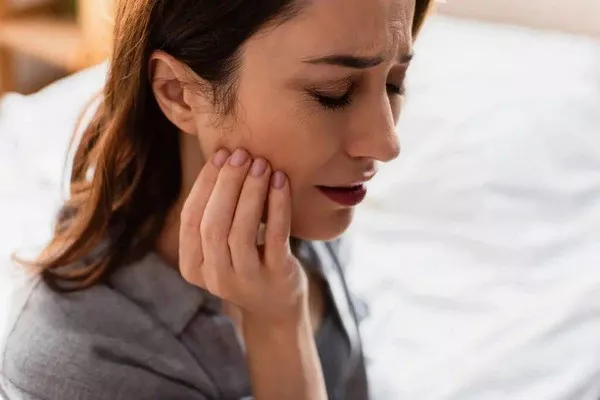A bright, white smile is often associated with good dental health and can boost your self-confidence. Many people turn to teeth whitening products to achieve that dazzling smile, and one popular option is whitening strips. While these strips can be effective in removing stains and brightening teeth, some users experience tooth sensitivity or soreness after using them. In this article, we’ll explore why whitening strips can make teeth sore and provide tips on how to minimize discomfort while still achieving a whiter smile.
Understanding Whitening Strips
Whitening strips are thin, flexible pieces of plastic coated with a whitening gel that contains an active ingredient, typically hydrogen peroxide or carbamide peroxide. When applied to the teeth, these strips adhere to the enamel and work to break down and remove stains, ultimately brightening the teeth.
Common Reasons for Teeth Soreness After Using Whitening Strips
Teeth soreness or sensitivity following the use of whitening strips can be attributed to several factors:
1. Increased Peroxide Concentration
The active ingredient in whitening strips, peroxide, is responsible for breaking down stains on the enamel. Some whitening strips may contain higher concentrations of peroxide, which can lead to increased tooth sensitivity. While higher concentrations can deliver faster results, they may also result in greater sensitivity.
2. Tooth Dehydration
Peroxide in whitening strips can temporarily dehydrate the teeth, causing them to lose moisture. Dehydrated teeth are more sensitive to temperature changes and can lead to discomfort.
3. Exposure to Nerves
In some cases, the peroxide in whitening strips may penetrate deeper into the tooth, reaching the nerves and causing sensitivity. This is more likely to occur if the strips are not applied correctly.
4. Overuse
Using whitening strips too frequently or leaving them on for longer than recommended can increase the likelihood of tooth sensitivity. Overuse can also lead to enamel erosion, making teeth more vulnerable to sensitivity.
5. Existing Dental Issues
Individuals with pre-existing dental issues, such as gum disease, tooth decay, or exposed tooth roots, are more susceptible to tooth sensitivity when using whitening strips.
Minimizing Teeth Soreness When Using Whitening Strips
If you experience tooth soreness or sensitivity after using whitening strips, there are steps you can take to minimize discomfort:
1. Follow the Instructions
Always follow the manufacturer’s instructions for the specific whitening strips you are using. Pay attention to recommended wear times and frequency of use.
2. Use Strips with Lower Peroxide Concentrations
Consider using whitening strips with lower peroxide concentrations, as they are less likely to cause sensitivity. However, they may require more extended use to achieve desired results.
3. Apply Desensitizing Gel
Some whitening strip kits include a desensitizing gel or toothpaste designed to reduce sensitivity. Use these products as directed to alleviate discomfort.
4. Reduce Frequency
Limit the frequency of whitening strip use to allow your teeth to recover between treatments. This can help prevent overuse and reduce sensitivity.
5. Shorten Wear Time
If you experience significant sensitivity, shorten the recommended wear time for the whitening strips. This can help reduce exposure to the active ingredient.
6. Use Fluoride Products
Fluoride toothpaste and mouthwash can help strengthen enamel and reduce sensitivity. Incorporate these products into your oral care routine.
7. Avoid Extremely Hot or Cold Foods
While experiencing sensitivity, avoid extremely hot or cold foods and beverages that can trigger discomfort.
8. Maintain Good Oral Hygiene
Continue to brush and floss regularly to ensure good oral hygiene. A clean mouth is less susceptible to sensitivity and discomfort.
9. Consult Your Dentist
If tooth soreness or sensitivity persists or worsens, consult your dentist. They can assess your dental health, address any underlying issues, and provide guidance on safe and effective whitening methods.
Alternative Teeth Whitening Options
If you find that whitening strips consistently cause discomfort, there are alternative teeth whitening methods to consider:
Professional Teeth Whitening: Dentists offer in-office teeth whitening treatments that are closely monitored and can provide faster results with less sensitivity.
At-Home Trays: Customized at-home whitening trays, provided by your dentist, allow you to whiten your teeth with a lower risk of sensitivity.
Whitening Toothpaste: Whitening toothpaste can help remove surface stains without the need for strips or trays. They are generally less likely to cause sensitivity.
Conclusion
Whitening strips can be an effective way to achieve a brighter smile, but they may cause tooth soreness or sensitivity for some individuals. Understanding the reasons behind this discomfort and following best practices for whitening strip use can help minimize the issue. If sensitivity persists or worsens, consult your dentist for personalized advice and consider alternative teeth whitening methods that may be more suitable for your dental needs and comfort.
Related Topics:































